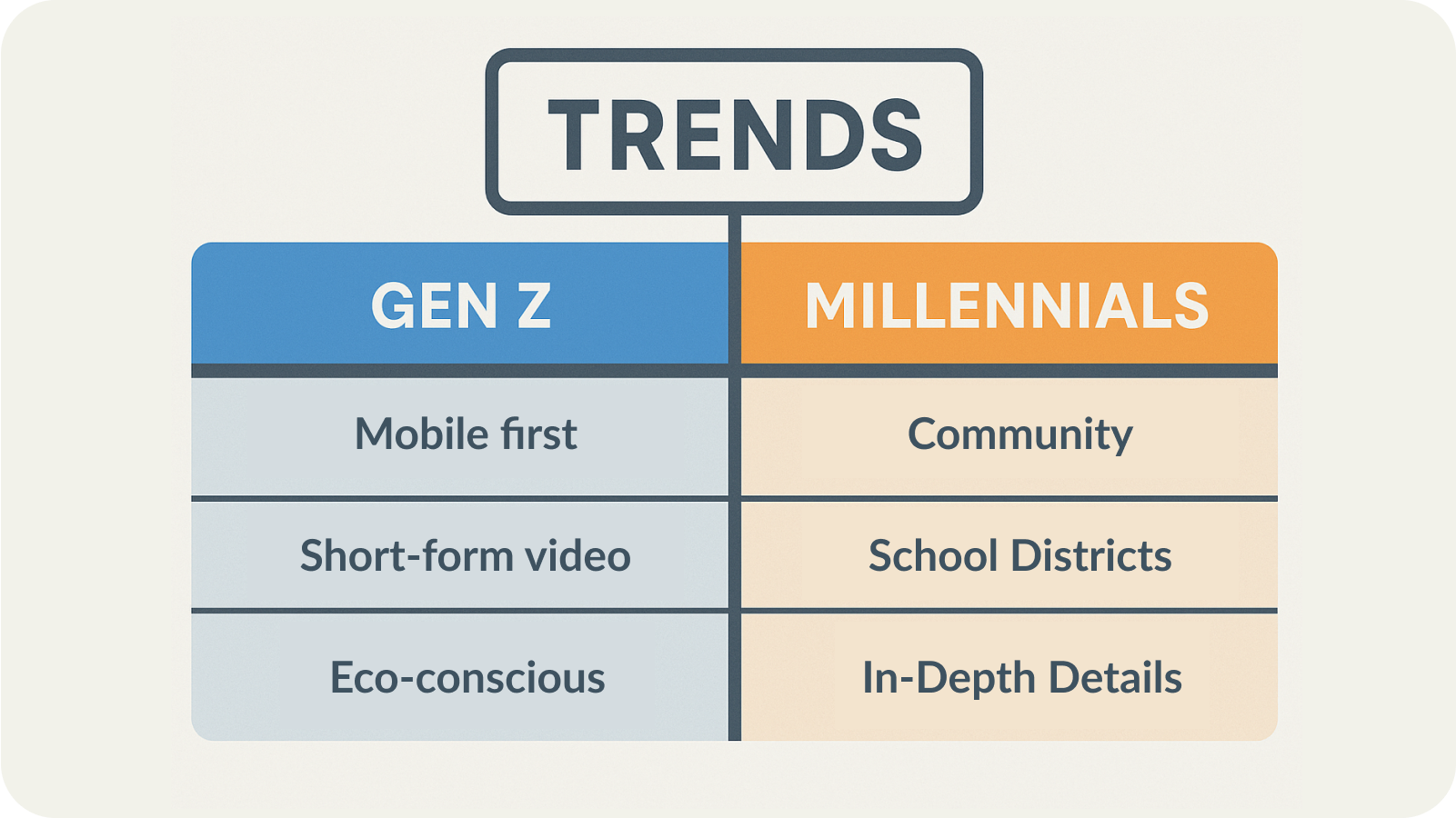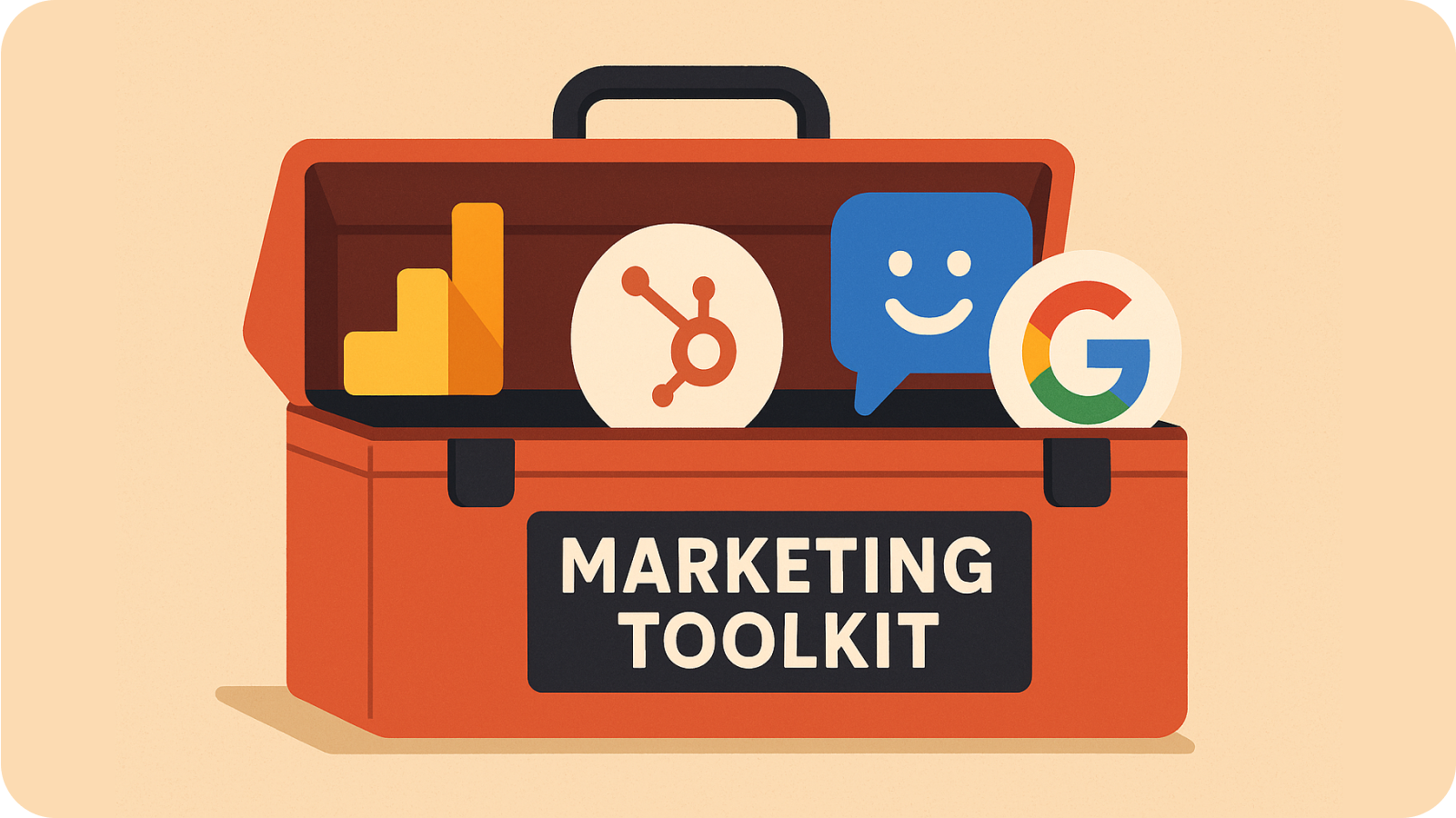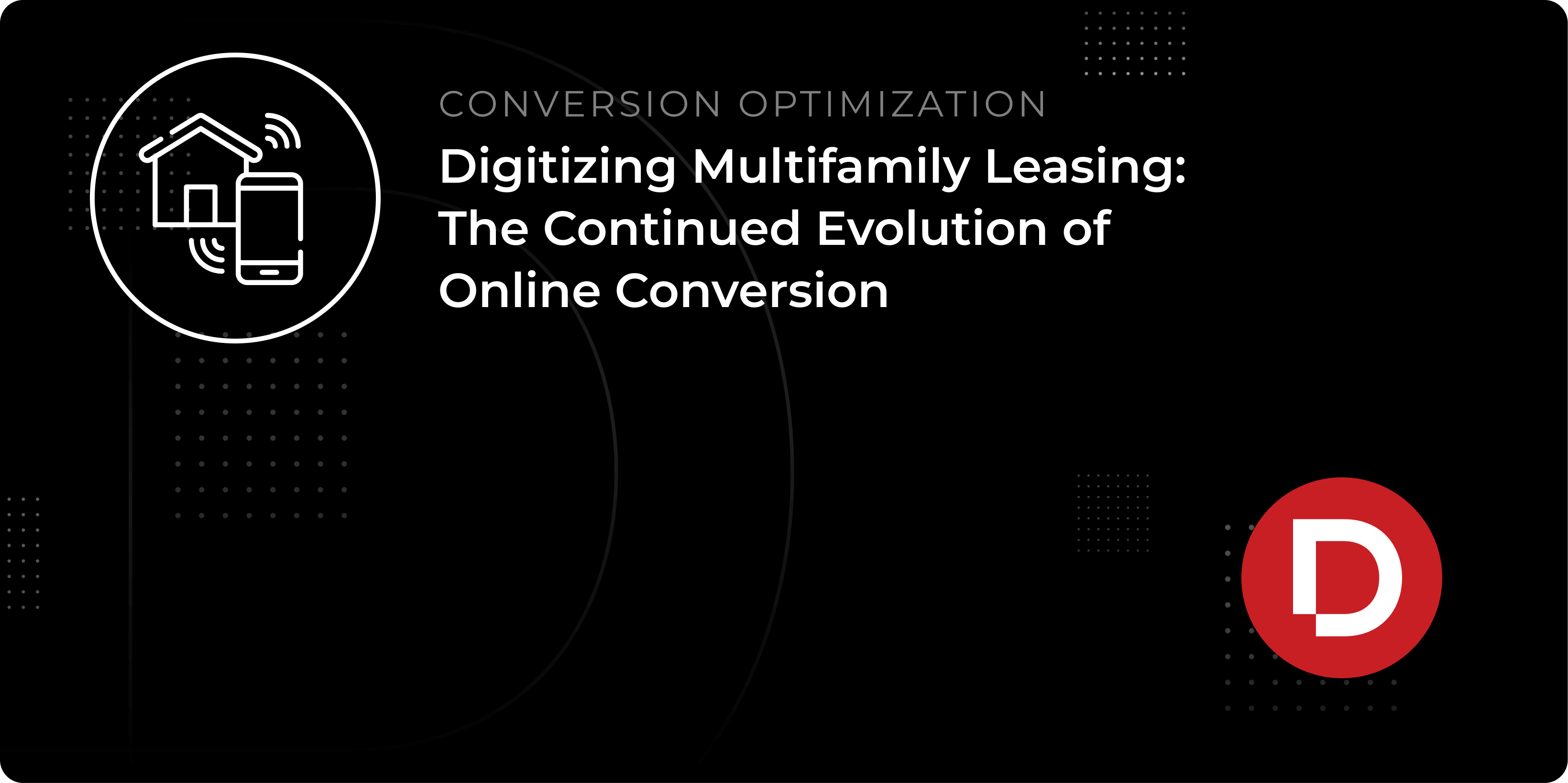Request Demo
Sign-up for a demo to see how our solutions can help you improve website conversion rate, generate more leases and simplify reporting.
We’re glad you’re here!
Thank you for choosing to continue to receive our communications. We look forward to continuing to engage with you. If there are any topics you’d like to make sure we cover, please feel free to reach out letsgo@dyverse.com.
Thanks for being awesome!


The pace of change in the multifamily housing industry is only accelerating as technologies evolve, demographics shift, and market dynamics fluctuate with greater frequency. As we continue our focus on budgeting and planning for 2026, it’s clear that crafting a successful marketing strategy now requires more than just understanding current trends. It requires the ability to anticipate the next ones.
In last month’s blog, we discussed how to build a future-ready, ROI-driven marketing budget. This month, we’re taking that one step further. To truly future-proof your marketing strategy, you need to utilize the power of trend forecasting: identifying signals of change early and turning them into strategic planning tools.
Whether you're a property manager planning next year’s lease-up or a marketing leader setting the roadmap for your portfolio, here’s how to use trend forecasting to create a smarter, more strategic marketing plan for 2026.
Know Where to Look: Key Data Sources for Trend Forecasting
Before you can forecast where the market is headed, you need to gather insights from reliable and forward-looking sources. The most effective trend forecasting starts by tracking a blend of macroeconomic, demographic, and behavioral data.
Here are a few sources multifamily marketers should keep an eye on:
- U.S. Census Bureau & American Community Survey: These tools offer invaluable data on household formation, income trends, and migration patterns, which are essential for understanding how renter demographics are shifting.
- Zillow, Apartment List, and Rent.com Indexes: Monthly rent trend reports can offer early indicators of rising or cooling markets and tenant behavior changes.
- Google Trends & Search Behavior: Search term volume around apartment-related queries, such as “pet-friendly apartments near me” or “studio vs. 1-bedroom”, can surface emerging renter preferences before they fully take shape.
- Internal CRM & Lead Data: Your own marketing and leasing data can reveal behavioral trends among your specific renter base - such as when leasing activity typically spikes or what amenities are driving inquiries.
Trend forecasting isn’t just about spotting what’s popular now; it’s about recognizing the slow-building shifts that signal what’s coming next.
Anticipate Economic Shifts That Influence Renter Behavior
Budget planning in a vacuum can leave you stranded. As we look toward 2026, a number of economic variables are poised to impact how and where people rent. Marketers should be factoring these trends into their messaging, media mix, and spend allocations:
We work with our clients to break down their marketing plans into three categories:
- Interest Rates & Inflation: Continued fluctuations in interest rates could keep some renters out of the homebuying market longer, while inflationary pressure may increase price sensitivity. This makes affordability messaging even more important.
- Urban vs. Suburban Migration: While urban cores are rebounding, suburban markets continue to attract renters looking for more space or hybrid work flexibility. Marketing strategies should adapt to these shifting geographic preferences.
- New Construction vs. Existing Inventory: In many markets, new developments are coming online while existing properties compete with fewer differentiators. That competition will increase the importance of targeted messaging and strong digital branding.
Marketers who proactively incorporate economic indicators into their 2026 strategy will be better prepared to pivot messaging and budget allocations as needed.

Understand Generational Shifts in the Renter Pool
Demographics are destiny, especially in multifamily marketing. By 2026, Gen Z will make up the majority of first-time renters, while Millennials increasingly transition into family housing or homeownership. Understanding these generational shifts and how to market to them will be crucial.
What does that mean for marketers?
For Gen Z Renters:
- Prioritize mobile-first content and short-form video.
- Highlight lifestyle perks, eco-conscious features, and flexible lease terms.
- Maintain a strong presence on TikTok, Instagram Reels, and YouTube Shorts.
For Millennial Families:
- Emphasize community, school districts, and convenience.
- Use more detailed content like virtual tours, feature-rich landing pages, and longer-form blog posts or guides.
- Tap into Google Search and Pinterest for their research-driven behavior.
Every generation has its own communication preferences, values, and decision-making processes. The best 2026 marketing strategies will segment messaging and channels accordingly.
Turn Trends into Action: Build a Budget That Balances Innovation and Stability
Once you’ve identified potential 2026 trends, the next step is converting them into a budget and strategy that positions your brand to adapt and thrive.
Here are a few ways to strike the right balance:
- Set Aside an Innovation Budget: Allocate a percentage of your marketing spend toward testing emerging platforms, creative formats, or AI tools. This “innovation sandbox” ensures you’re not caught flat-footed if a new channel (like Threads or the next short-form video platform) takes off.
- Diversify Media Spend: Avoid putting all your marketing dollars in one basket. A healthy mix of SEO, paid search, social, email, and local community engagement allows you to meet renters across multiple touchpoints, and shift resources if one channel underperforms.
- Embrace Agile Planning: Consider building your budget in quarterly phases, leaving room for adjustments based on campaign performance or market changes. Use scenario planning to map out how you’ll respond if lead volume drops, cost-per-lead increases, or a new competitor enters your submarket.
A future-proofed budget doesn’t try to predict every possibility - it builds in the flexibility to respond effectively when change inevitably comes.

Use the Right Tools to Track & React to Trends
The best trend forecasting doesn’t stop at analysis - it’s connected to action. Fortunately, today’s multifamily marketers have more tools than ever to monitor, measure, and adapt in real time.
Consider integrating these into your 2026 strategy:
- Google Analytics & GA4: Track site traffic trends, conversions, and renter journeys to see what messaging and content is resonating.
- Marketing CRMs & CDPs: Multifamily specific CRM platforms like Funnel, Knock and Yardi's CRM IQ can help segment audiences and automate outreach based on user behavior.
- Reputation Management Tools: Tools like Opiniion, Chatmeter or Widewail can provide insights into resident satisfaction trends, helping you identify where to invest in service messaging or amenities.
- A/B Testing Software: Test creative, landing pages, or offers with platforms like Unbounce or Optimizely to optimize performance based on real data.
The key is to build a tech stack that supports both short-term performance and long-term insight. When used properly, these tools allow you to fine-tune your strategy continuously - without waiting for end-of-year results to make changes.
Dyverse’s Kyzen Analytics takes trend tracking a step further by offering a full-funnel comprehensive view of marketing performance across platforms, sources, and budget categories. Kyzen makes it easy to audit cost-per-lease, identify underperforming channels, and reallocate spend to maximize ROI. With customizable dashboards and automated reporting, it helps marketers make faster, more informed decisions, turning complex data into clear action steps. By layering in Kyzen’s insights, marketing teams can forecast with greater confidence and plan 2026 budgets that are both forward-looking and grounded in real performance data.
Final Thoughts: Forecasting for Confidence
Trend forecasting is about listening carefully, watching closely, and planning wisely. With 2026 on the horizon, now is the time to assess the signals, build a flexible yet focused marketing budget, and empower your team with the data and tools they need to stay ahead of the curve.
At Dyverse, we believe the most resilient marketing strategies are those built on insight, agility, and a commitment to continuous learning. By blending economic awareness, generational understanding, and a tech-forward mindset, you can turn today’s trends into tomorrow’s advantage.
Stay tuned for next month’s continuation of the “Future-Proofing Your Marketing Strategy” series, where we’ll dive deeper into financial planning tactics that help you maximize every marketing dollar in 2026.

Copy link
Share on LinkedIn
Share on X
Share on Facebook
More from Dyverse

- Automation/AI
- February 26, 2025
- 5 min read
Automation & AI in Multifamily Marketing: Transforming Lead Engagement and Conversion
The multifamily marketing landscape is undergoing a massive change, with automation and artificial intelligence (AI) playing a critical...
Let's start a conversation
Schedule a demo to discuss how Dyverse can help you boost your leasing performance.




